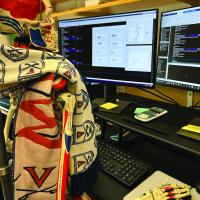Muscle Modeling

What do we mean by Multiscale Musculoskeletal Mechanophysiology?
We work across length scales from proteins to the whole body
We find skeletal muscles fascinating
We study muscles at the intersection between mechanics and physiology
We use a lot of computers and also many different experimental techniques
Our research goals include:
- Elucidate the fundamental principles of musculoskeletal design.
- Create the world's most innovative, accurate, realistic, and beautiful models of muscle.
- Develop new experimental techniques to study muscle properties and function.
- Translate our work to have societal impact.